Tomato variety Long Keeper
Long Keeper (from the English Long Keeper) is a tomato variety of a very late ripening period. Bred by specialists of the Gisok-Agro seed-breeding company. Included in the State Register of the Russian Federation in 1999 for growing in open ground, unheated film greenhouses and under temporary film shelters. Recommended for garden plots, home gardens and small farms. Approved for cultivation in all regions of Russia. Authors: E.A. Sysina, K.B. Bogdanov, M.I. Ushakova, S.L. Nazina, E.N. Andreeva.
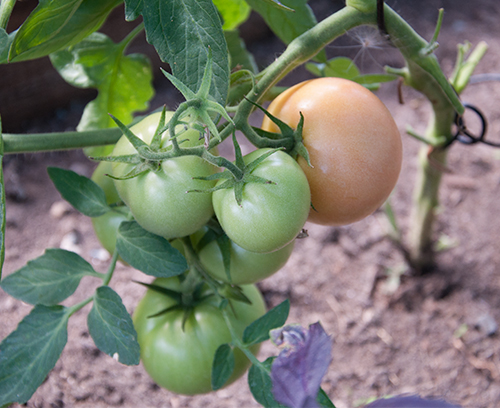
The period from picking fruits from the bush to ripening is 30 - 35 days.
Plants of a Long Keeper tomato are determinate (the growth of the central stem is limited by a flower race), 140 - 160 cm high. The leaves are medium-sized, green in color with a light silvery bloom. The inflorescences are simple. The first inflorescence is laid above the seventh leaf, the subsequent ones - after one or two leaves. The peduncle is articulated.
Round and flat-round tomatoes, medium size, weighing 130 - 200 grams. The skin is smooth. The color of the unripe fruit is whitish. On the bush, the fruits ripen very rarely; when technical ripeness is reached, they can crumble. Ripe tomatoes become whitish-orange in color. However, in hot summers, with early sowing, they can reach a bright red color. The number of nests is more than 4. The yield of marketable fruits is 6 - 7 kg / square meter.
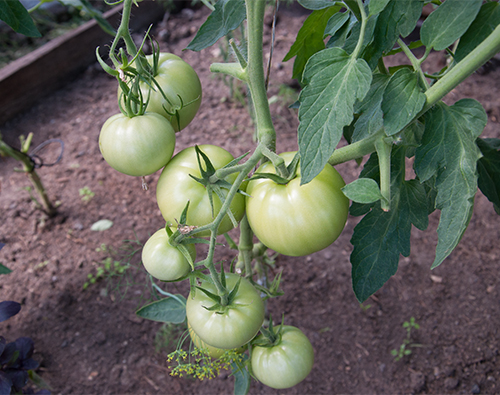
A salad-type variety - recommended for fresh consumption, but also suitable for canning. It is characterized by the preservation of the marketable properties of the fruit for 60 - 80 days, which allows to extend the period of consumption of fresh products for the entire winter period.
Advantages of the Long Keeper tomato: high fruit density, stable yield, long-term storage until March (as indicated by the name of the variety).
Disadvantages: mediocre taste after long-term storage, large seeds, rough skin.
The soil for planting can be of the following composition: 2 parts of sod land, 2 parts of humus, 1 part of sand. The planted seeds are kept at a temperature of at least 16 ° C. With the appearance of the first two true leaves, the seedlings dive into separate pots with a diameter of 10 cm. A week before planting the seedlings in the ground, it is recommended to fertilize with a complete mineral fertilizer with a predominance of potassium and phosphorus. Planting seedlings in a permanent place is carried out when the threat of frost has passed.
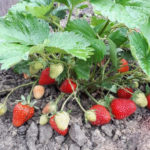

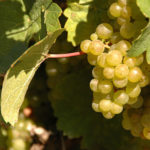
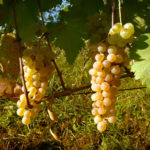
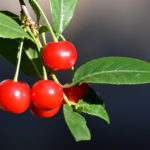
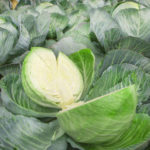



We always tried to plant late varieties of tomatoes, but the fruits were stored for a month or a month and a half, and three years ago I was advised to buy Long Keeper tomato seeds - they said that no variety lasts longer than these tomatoes. I want to say "thank you" to that advisor - yes, the tomatoes lie for a very, very long time (not a month or even two, but much more). Fruits are medium-sized, with dense pulp - this is both a "plus" and a "minus" of the variety, since the dense pulp "gives" the opportunity for long-term storage, but it does not become completely juicy, which is not very tasty. Climate there are often outbreaks of phytophthora, so it is problematic to grow late-ripening varieties - Long Keeper does not always live to see the harvest.
I agree with Elena, Long Keeper is susceptible to late blight. Last year, the summer was rainy, and my tomatoes began to ache, which I just didn’t do for them, everything was useless. Only in the morning I will process it, in the evening it rains, and all my labors are gone. Of course, I gathered some kind of crop, but it was not suitable for storage. Tomatoes had to be canned, well, and which ones were not suitable for this, I made a salad.I want to say that my household members liked the green tomatoes in the jar more than the red ones. I definitely plant a late tomato variety so that the garden is not empty in the fall. If you manage to save the bushes over the summer, then they ripen until late autumn, delighting with their fruits.